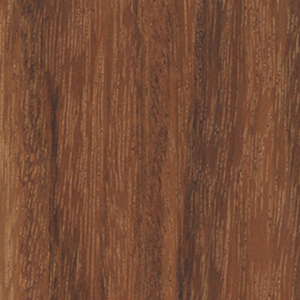- Common Name(s):Tzalam, Caribbean Walnut, Sabicu, False Tamarind
- Scientific Name:Lysiloma spp. (L. bahamense and L. latisiliquum)
- Distribution:Mexico and Central America
- Tree Size:50-65 ft (15-20 m) tall, 2-3 ft (.6-1 m) trunk diameter
- Average Dried Weight:49 lbs/ft3(780 kg/m3)
- Specific Gravity (Basic, 12% MC):.63, .78
- Janka Hardness:1,400 lbf(6,230 N)
- Modulus of Rupture:12,800 lbf/in2(88.3 MPa)
- Elastic Modulus:1,900,000 lbf/in2( 13.10 GPa)
- Crushing Strength:No data available
- Shrinkage:
- Radial: 2.7%,
- Tangential: 7.2%,
- Volumetric: 9.5%,
- T/R Ratio: 2.7
Caribbean Walnut / Tzalam
- Perhaps due to its somewhat obscure and strangely spelled common name, Tzalam is sometimes marketed as “Caribbean Walnut,” though it bears little relation to the true walnuts in the Juglans genus. Appearance-wise, Tzalam can closely resemble Koa. Fluorescent.
| Color/Appearance | Heartwood light to medium brown, sometimes with a reddish or purplish hue. Darker brown streaks common. Thin sapwood is a pale grayish white, clearly demarcated from heartwood. Sometimes seen with curly grain patterns. |
|---|---|
| Grain/Texture | Straight grain with an open, uniform texture. Medium luster. |
| Endgrain | Diffuse-porous; large pores in no specific arrangement, few to very few; solitary and radial multiples of 2-3; heartwood deposits occasionally present; narrow rays not visible without lens, normal spacing; parenchyma vasicentric, lozenge, confluent, and banded (marginal). |
| Rot Resistance | Reported to be very durable, and also resistant to most insect attacks. |
| Workability | Overall working properties are good, though Tzalam may blunt tool edges faster than usual. Turns, glues, and finishes well. Able to take a high natural polish. |
| Odor | No characteristic odor. |
| Allergies/Toxicity | Although severe reactions are quite uncommon, Tzalam has been reported to cause cold-like symptoms. |
| Pricing/Availability | Prices likely to be moderate for an imported tropical species. Boards with curly grain or another figure are likely to be considerably more expensive. |
| Sustainability | This wood species is not listed in the CITES Appendices or on the IUCN Red List of Threatened Species. |
| Common Uses | Flooring, exterior furniture, interior trim, veneer, turned objects, and other small, specialty wood items. |





Reviews
There are no reviews yet.